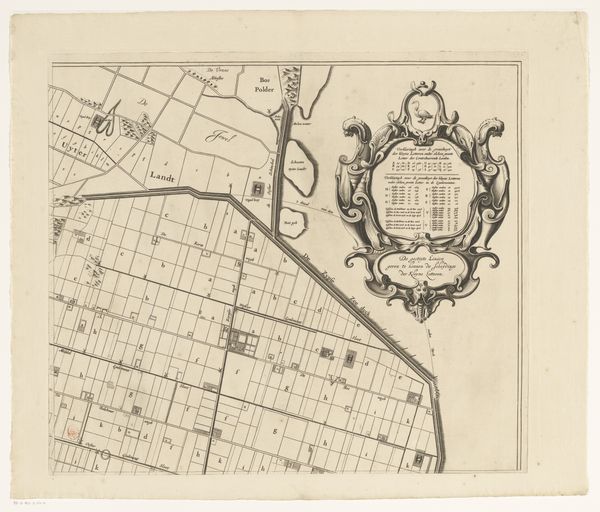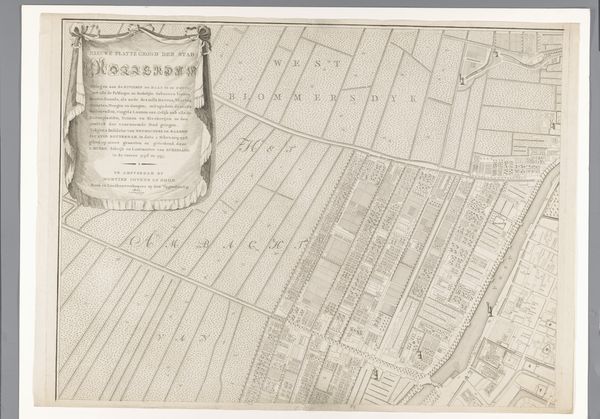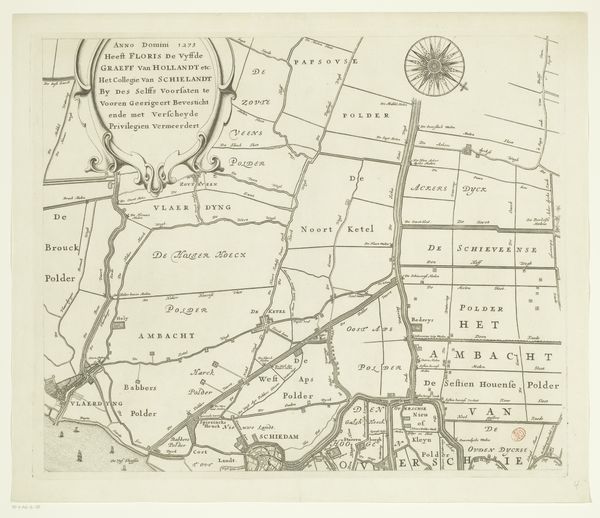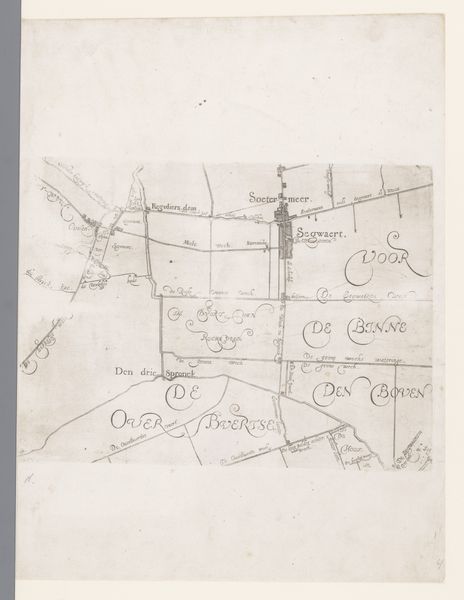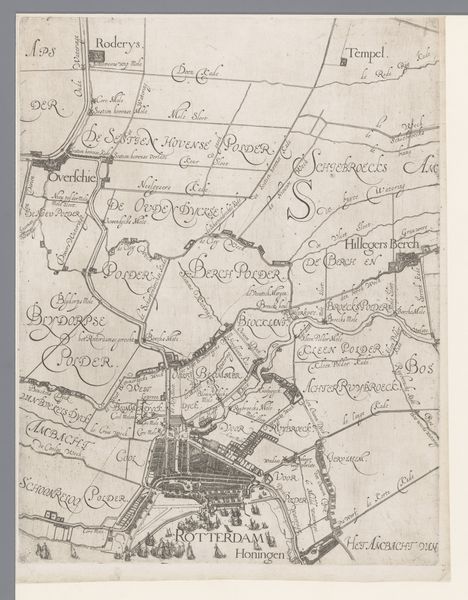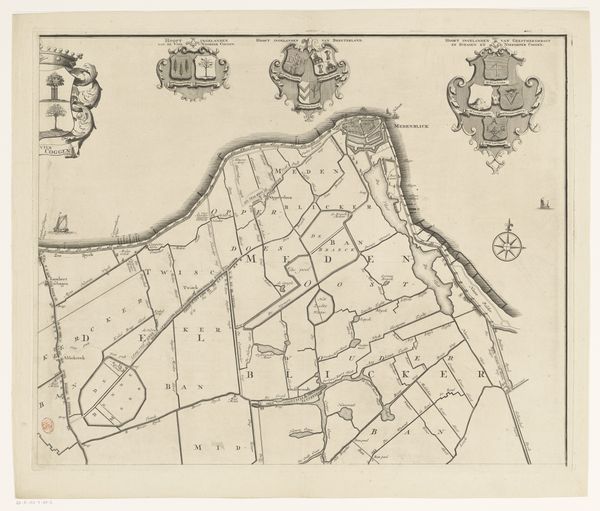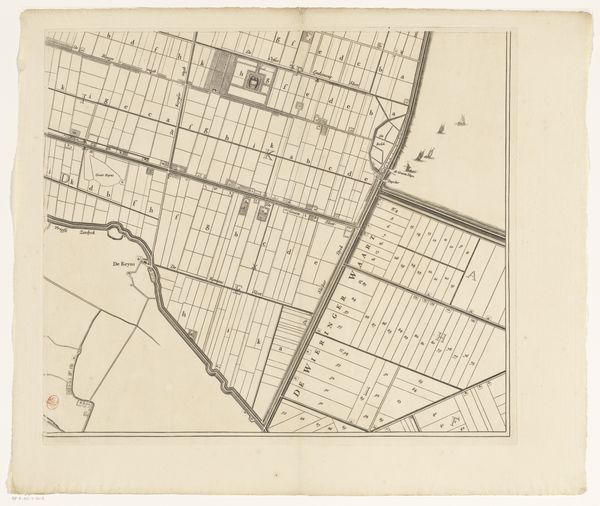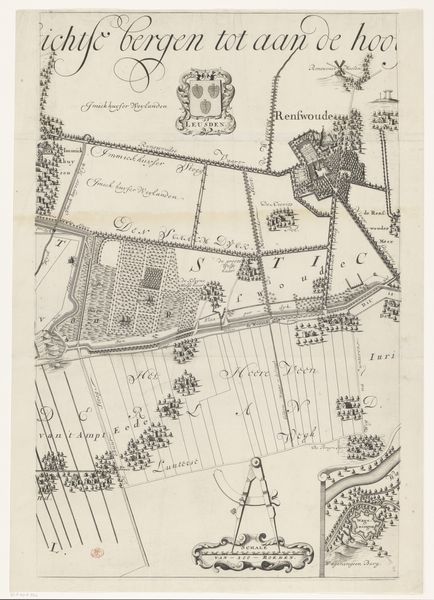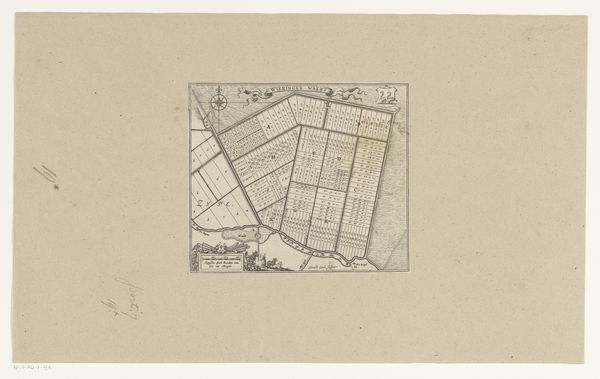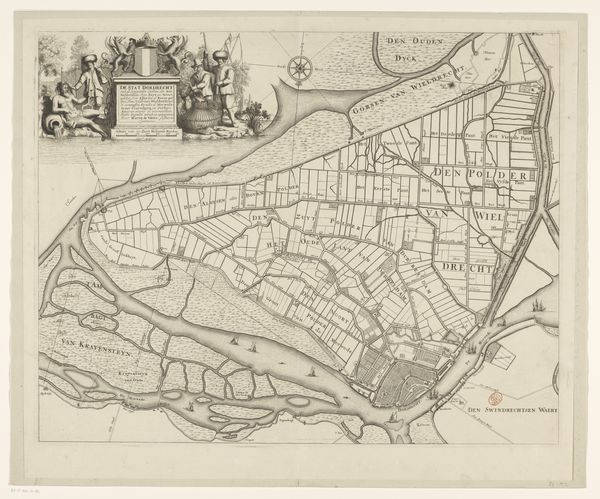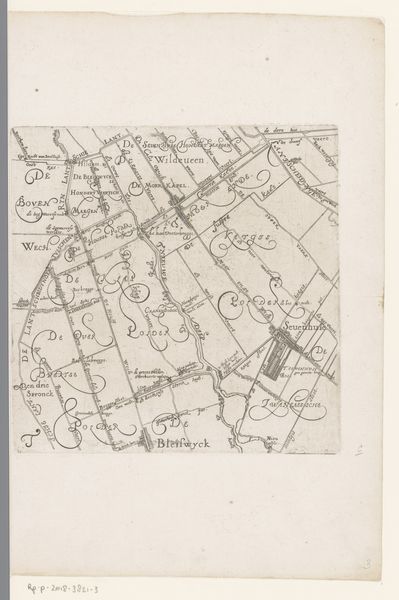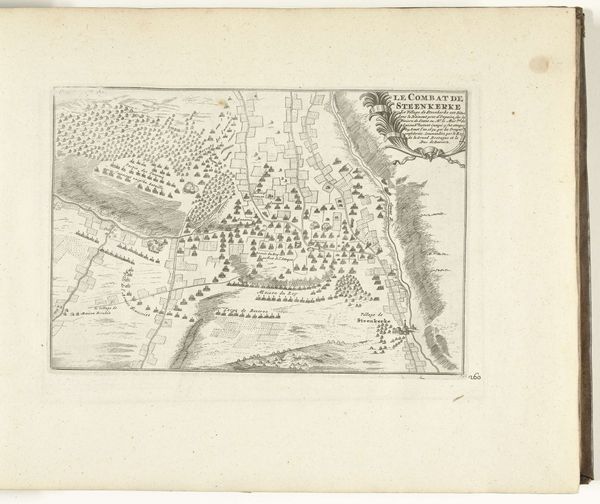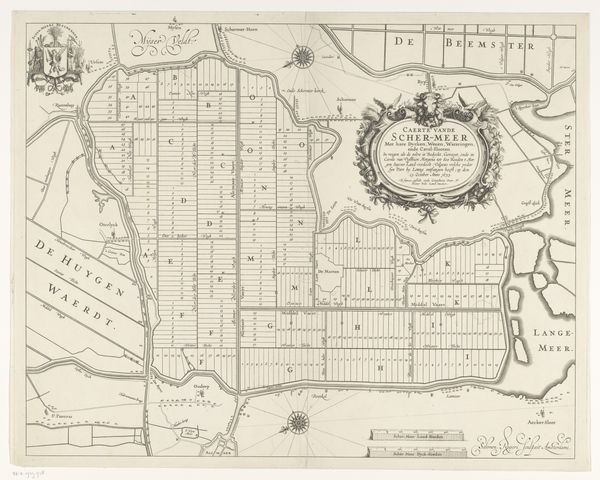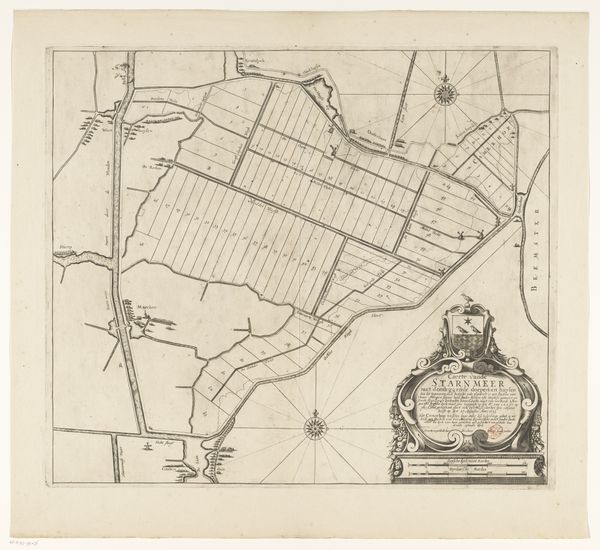
Kaart van de Zijpe- en Hazepolder (deel midden boven) 1665 - 1760
0:00
0:00
reiniervanpersijn
Rijksmuseum
drawing, print, ink, engraving
#
pen and ink
#
drawing
#
baroque
# print
#
old engraving style
#
landscape
#
ink
#
geometric
#
cityscape
#
engraving
Dimensions: height 471 mm, width 540 mm
Copyright: Rijks Museum: Open Domain
Editor: This is a section of the "Kaart van de Zijpe- en Hazepolder", created sometime between 1665 and 1760, found in the Rijksmuseum. It seems to be a very detailed map rendered with pen, ink and engraving. I’m immediately struck by the grid-like structure. It feels very organized, almost regimented. What compositional elements stand out to you? Curator: Indeed. The emphasis here is undoubtedly on structure. Observe how the rigorous geometry dominates the pictorial space, virtually eradicating any potential for naturalistic representation. The composition relies on a stark interplay of vertical and horizontal lines, establishing a visual grammar rooted in order and precision. How do these repetitive elements contribute to the overall meaning of the map, beyond its practical function? Editor: I suppose it creates a sense of control. Each square looks almost identical, suggesting everything is neatly divided and managed. Do the Baroque influences typical to the time have a role in that rigid, precise control, too? Curator: Baroque art, while often exuberant, also valued clarity and order, evident in its embrace of classical principles. In this map, we witness that inclination towards rational organization, albeit manifested in a restrained, utilitarian form. Note how the curves in the cartouche serve as the only release from the geometric austerity, functioning as a counterpoint to the pervasive linearity. Is there any suggestion of emotion or expression in this organizational principle? Editor: That's interesting – I hadn't considered the cartouche as providing release. It’s hard to see overt emotion, but perhaps the very act of mapping, of imposing order, expresses a human desire for control over the land. It makes me see the emotional resonance in precision itself. Curator: Precisely. Through the meticulous rendering of spatial relationships, this work transforms cartography into a subtle exercise in formalism, where meaning is derived from the systematic arrangement of lines and shapes. It reveals the power of geometric language in creating structured space, as opposed to Baroque dynamism. Editor: This discussion has completely changed my perspective. It’s not just a map; it's an argument about order, articulated through line and form.
Comments
No comments
Be the first to comment and join the conversation on the ultimate creative platform.
